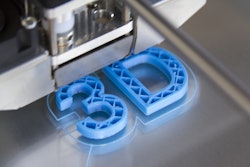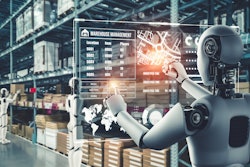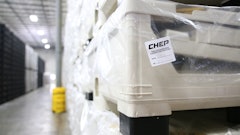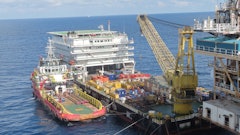
It starts with a lockup.
Somewhere between the receiving dock and the automated pick module, a frozen case of cauliflower rice is lodged, triggering a brief halt in operations. A red light blinks. The conveyor belts come to a halt. Minutes tick by. The impulse to solve the problem quickly — at whatever cost — takes over.
It’s human nature to want to get things moving again. In the moment, workers often rely on instinct and experience to restore flow. But these moments — small disruptions in otherwise seamless systems — are exactly where thoughtful design makes the difference. When logistics environments are built to anticipate the need for safe access, clear protocols, and manageable maintenance, rapid recovery doesn’t have to come with elevated risk.
In the race to automate warehouse operations to meet rising demand — particularly in food and beverage logistics — there’s a tendency to focus first on speed, throughput, and efficiency. But safety must be integrated from the beginning, rather than added after the fact, to anticipate oversights and vulnerabilities.
According to the Bureau of Labor Statistics, the warehousing and storage industry posts an injury rate of 4.8 per 100 workers, nearly double the national average. That gap widens in cold chain environments where condensation, cramped quarters, and time-sensitive product handling exacerbate everyday risks. A 2023 Swedish study confirmed that those working in cold conditions face significantly higher incidences of neck and back pain, often with radiating symptoms.
And yet, when new automation systems are designed and deployed, safety can sometimes be treated as a retrofit rather than a foundation. Thoughtful system design can address more than just meeting regulations. Safety must be included in every stage of system design, from initial concepting through implementation, and important conversations about access, maintenance, and the human realities of upkeep must happen up front.
The human cost of design gaps
Design oversights can range from the mildly inconvenient to serious obstacles that complicate day-to-day operations. Tight service points, misaligned workstations, or workflows that require fast manual intervention may not seem problematic during early planning, but they can lead to safety issues over time.
These flaws don’t come from ignorance, but they come from misplaced priorities. The drive for increased throughput eclipses the practical realities of people working with equipment. That’s why in our system design reviews we evaluate not just technical feasibility but how every decision affects access, ergonomics, and long-term maintainability.
In food logistics, overlooking safety can have consequences beyond worker injury. When a breakdown delays picking or packaging, it can quickly threaten product integrity. Delays in cold storage facilities risk food waste, regulatory infractions, and ultimately loss of revenue.
Still, the pressure to hit deadlines sometimes overrides prudence. Tunnel vision sets in — a condition some in the industry call “go fever.” It’s the compulsion to prioritize output over outcome, to push forward simply because the system is supposed to be moving. In those moments, what’s often missing is a clear voice with the authority to say, “We’re not there yet.” Without that voice, risk multiplies, masked by momentum.
The result? Workers take dangerous shortcuts to keep things moving. Skipped safety checks. Improvised repairs. And a silent accumulation of risk. In 2023 alone, the National Safety Council reported 103 million days lost to work-related injuries. That’s more than a statistic — it’s a signal that the current approach is unsustainable.
Despite these unfortunate statistics from the past, there is reason for optimism for the future. Predictive tools powered by artificial intelligence (AI) are beginning to reshape how systems approach operational safety.
Building safety in, not around
AI is particularly valuable when it reveals patterns — certain tasks, specific shifts, or certain materials that correlate with increased risk. That’s when intervention shifts from reactive to proactive, transforming safety from a response into a strategy.
AI-assisted predictive maintenance, which is now gaining traction in complex food warehousing systems, allows operators to identify and address issues before they become emergencies — faults are flagged before they stall a line, repairs are scheduled before system integrity is compromised. As a result, the urgency fades, and with it, the impulse to take risks.
But technology alone isn’t enough. For safety to be truly embedded in warehouse operation design, it must also be institutionalized, particularly in industries subject to tight regulatory scrutiny.
Food and beverage companies serving international markets face an especially intricate web of compliance standards. Whether navigating U.S. OSHA guidelines or EU worker safety directives, companies can’t afford to separate design from regulations. Maximizing system throughput may be the operational goal, but the focus for regulators will always be on hygiene, contamination risk, and worker well-being.
In that context, automation systems must meet global safety benchmarks — not just operational key performance indicators. And that requires reframing the way safety is viewed in early-stage planning.
Safety must be treated as a design pillar from the outset. If a system is too cramped to navigate or positioned too high for safe service, it signals a fundamental oversight: The design process did not truly consider the role and function of the operator.
The best systems today incorporate past incident data into new builds. They involve maintenance and safety leaders at the earliest stages of design. They prioritize ergonomic access, not just technical specs. They anticipate interactions with workers and don’t assume all interactions will be automated away.
Getting it right means more than just meeting compliance — it strengthens labor retention, enhances product quality, and protects brand reputation. And for food and beverage operations, these benefits are even more vital.
The good news is that safety, when embedded thoughtfully, isn’t a tradeoff. It’s a multiplier. Smart automation design reduces downtime, builds worker confidence, and shores up resilience against the inevitable bumps in the road — or lockups in the system.
In the end, the best measure of a modern warehouse operation isn’t just how fast it moves. It’s how well it protects the people who keep it moving.




















